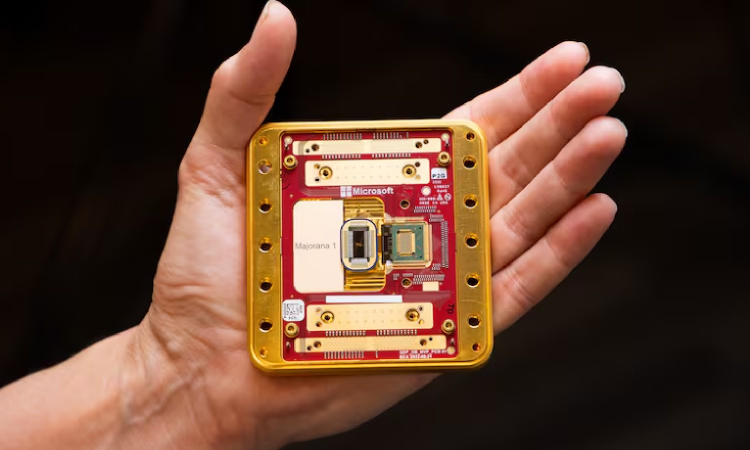DT Next Explains: Microsoft's Majorana 1 chip paves the way for advancements in quantum computing
This new architecture that is used to develop the Majorana 1 processor offers a clear path to fit a million qubits onto a chip that can fit in the palm of one’s hand.

Microsoft says the architecture used to develop Marjorana 1 offers a clear path to fit a million qubits on a single chip that can fit in the palm of a hand. (Photo: Microsoft)
CHENNAI: Microsoft has unveiled Majorana 1, the world’s first quantum chip built on the topological core architecture.
The new Majorana 1 chip is designed to make quantum computing more practical, faster and reliable. Quantum computers process information differently from traditional, classical computers, using qubits (quantum bits aka basic units of information) instead of regular bits. The chip utilises a groundbreaking material that can monitor and manipulate Majorana particles, resulting in more scalable and stable qubits, key components for computing.
This new architecture that is used to develop the Majorana 1 processor offers a clear path to fit a million qubits onto a chip that can fit in the palm of one’s hand.
This is a much-needed threshold for quantum computers to deliver transformative, real-world solutions such as breaking down microplastics into harmless byproducts or inventing self-healing materials for construction, manufacturing or healthcare.
Reports say that the qubits created with topoconductors are faster, more reliable, and smaller and they are 1/100th of a millimetre, which now leads to a clear path to a million-qubit processor.
The chip now fits in the palm of your hand and yet can create computers capable of solving problems that even all the computers today combined cannot do.
To add to it, here are some of the key features which shall play a major role in the future of quantum systems.
Key features of the Majorana 1 chip
Topological qubits: The Majorana 1 chip utilises topological qubits that are inherently more resistant to errors compared to traditional qubits. This robustness is crucial for building reliable quantum computers that can perform complex calculations.
Digital control: A new measurement approach allows for digital control over qubits, simplifying the process of quantum computation and making it more scalable.
Compact design: The chip's small size facilitates its deployment within existing data centre infrastructures, such as Azure, making it practical for commercial applications.
Future of Quantum systems:
Similar to the way semiconductors paved the way for smartphones, computers and electronics, topoconductors and the chip they enable are promising a future of quantum systems capable of scaling to a million qubits and addressing some of the most complex global issues, said Microsoft.
1. Scalability and power: As quantum computing systems evolve, they will be able to scale up significantly, to achieve a million qubits or more. This would enable quantum computers to solve complex problems that are currently beyond the reach of classical computers, including optimization, machine learning, and simulations of molecular structures.
2. Solving complex problems: Quantum systems could revolutionise industries by tackling knotty problems in areas like pharmaceuticals, cryptography (cracking existing encryption schemes), and artificial intelligence (enhancing machine learning algorithms).
3. Networking and communication: Quantum systems are expected to enable quantum networks that can facilitate ultra-secure communication through quantum key distribution. These systems will form the foundation for quantum internet, offering enhanced data security that classical systems cannot afford.
4. Improved AI and machine learning: Quantum computing has the potential to dramatically improve Artificial Intelligence algorithms by enabling faster processing of large datasets and solving problems that classical computers struggle with, such as optimisation, pattern recognition, and training deep learning models more efficiently.



